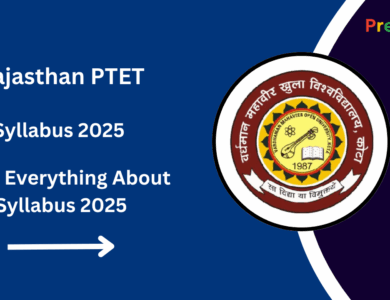CAT Syllabus 2025: Section-Wise Topics, Weightage & Exam Pattern
Explore the comprehensive CAT 2025 syllabus covering Quantitative Aptitude, VARC, and DILR sections. Stay updated with the latest exam pattern, topic-wise weightage, and expert preparation tips to enhance your CAT preparation strategy.

Planning to crack CAT 2025? Whether you’re from a commerce, science, arts or engineering background — this guide is for you.
CAT (Common Admission Test) is the gateway to India’s top B-schools including the IIMs, FMS, MDI, SPJIMR, and more. With over 2.5 lakh aspirants every year, understanding the exam structure and syllabus is your first step to success.
Unlock Your Dream Government Job
Get unlimited access to our premium mock test series. Practice with the best to score the best.
- 10,000+ Premium Test Series
- 300+ Government Exams Covered
- Absolutely Free No Hidden Costs. Ever.
Get Started Now!
Join thousands of successful aspirants today.
Join Now For Free
Original Price ₹1999/-
Today's Price: ₹0 for 1 Year!
In this post, you’ll find everything you need to know — from updated CAT exam pattern to section-wise syllabus breakdown, best books, and smart strategies. Let’s simplify CAT prep, one section at a time.
CAT 2025 Exam Pattern
| Component | Details |
|---|---|
| Exam Mode | Computer-Based (CBT) |
| Duration | 2 Hours (40 minutes per section) |
| Total Sections | 3 – VARC, DILR, QA |
| Total Questions | 66–68 (subject to change) |
| Types of Questions | MCQs and TITA (non-MCQs) |
| Marking Scheme | +3 for correct, -1 for wrong (MCQ), no negative for TITA |
Note: Once 40 minutes for a section ends, you cannot go back. So time management is crucial.
CAT 2025 Syllabus – Section-Wise Breakdown
1. Verbal Ability and Reading Comprehension (VARC)
This section checks your English language skills, reading speed, and ability to understand complex ideas.
| Subsection | Topics |
|---|---|
| Reading Comprehension | Passages from economics, psychology, sociology, fiction, science, philosophy |
| Verbal Ability | Para-jumbles, Para-summary, Sentence Elimination, Odd one out, Completion tasks |
Tip: Practice 2 RCs daily from diverse topics and read editorials from The Hindu, Indian Express, and The Economist.
2. Data Interpretation and Logical Reasoning (DILR)
DILR measures your logical thinking, pattern recognition, and ability to interpret data from various formats.
| Subsection | Topics |
|---|---|
| Data Interpretation | Bar charts, Line graphs, Pie charts, Caselets, Tables, Venn diagrams |
| Logical Reasoning | Arrangements, Puzzles, Team formations, Binary logic, Direction sense, Blood relations |
Tip: Solve previous year DILR sets and target 3 complete puzzles daily with a timer.
3. Quantitative Aptitude (QA)
This section checks your numerical ability, basic math understanding, and problem-solving speed.
| Topic | Subtopics |
|---|---|
| Arithmetic | Percentages, Profit & Loss, SI & CI, Ratio & Proportion, Time-Speed-Distance, Time & Work |
| Algebra | Equations, Inequalities, Functions, Sequences |
| Number System | Factors, Multiples, Base systems, Remainders, HCF & LCM |
| Geometry & Mensuration | Triangles, Circles, Polygons, Area, Volume |
| Modern Math | Set Theory, Permutations & Combinations, Probability, Logarithms |
Tip: Start with Arithmetic and Algebra – they form over 50% of the QA section.
Best Books for CAT 2025 Preparation
For Verbal (VARC)
- How to Prepare for VARC – Arun Sharma
- Word Power Made Easy – Norman Lewis (for vocabulary)
- Editorials from The Hindu / The Guardian
For DILR
- Logical Reasoning & DI for CAT – Nishit K. Sinha
- CAT Previous Year Papers – Arun Sharma
For Quant
- Quantitative Aptitude for CAT – Arun Sharma
- NCERT Class 6 to 10 Maths (Basics)
Online Resources
- IMS India Mocks & Prep Packs
- 2IIM YouTube Channel
- Cracku Daily CAT Targets
Common Mistakes to Avoid During CAT Prep
- Ignoring mock test analysis – not reviewing mistakes is a huge loss
- Over-focusing on one section and ignoring others
- Using too many books/resources without mastering any
- Skipping revision – even toppers forget if they don’t revise
Pro Tip: Spend 1 hour every weekend just analyzing your past mock performances.
Preparation Tips for CAT Exam
- Understand the Exam: Know the pattern, syllabus, and marking scheme.
- Make a Study Plan: Allocate time based on strengths and weaknesses.
- Build Basics: Strengthen fundamentals in Math, English, and Reasoning.
- Practice Mock Tests: Take regular mocks and analyze mistakes.
- Improve Reading: Read newspapers and practice comprehension daily.
- Manage Time: Practice timed questions and develop strategies.
- Focus on DILR: Regularly practice puzzles and data interpretation.
- Stay Healthy: Maintain good sleep, diet, and stay stress-free.
FAQ – Frequently Asked Questions
1. Is CAT only for IIMs?
No. CAT scores are accepted by 1000+ B-schools including FMS, MDI, IMT, IMI, TAPMI, and IIT MBA programs.
2. What’s a good score in CAT?
A 99 percentile is usually around 100–110 marks. But even 85+ percentile can get you decent colleges with good academics & profile.
3. How many hours of study is enough?
If you start 6–8 months in advance, 2–3 focused hours daily are enough with the right strategy.
4. Can a non-math student crack CAT?
Yes! Arithmetic, Algebra, and Geometry can be mastered with practice. Many arts and commerce background students score 95+ percentile.
Final Words – Your 3-Step Action Plan
- Step 1: Start with concept-building (especially QA basics)
- Step 2: Read daily and solve 1 RC + 1 Puzzle + 5 QA questions
- Step 3: Give 1 full-length mock every week and analyze thoroughly
CAT is not just about being smart. It’s about being consistent, analytical, and time-efficient.
Bookmark this guide and keep coming back during your prep journey. Let this be your roadmap to CAT 2025 success!





